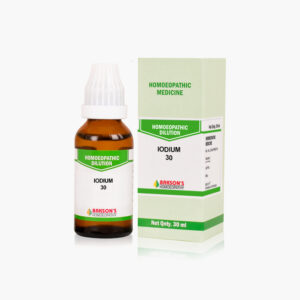What is Thyroid Disease?
Thyroid disease occurs when the thyroid gland doesn’t supply the proper amount of hormones needed by the body. If the thyroid is overactive, it releases too much thyroid hormone into the bloodstream, resulting in hyperthyroidism. (“Hyper” is from the Greek, meaning “over” or “above.”) Hyperthyroidism causes the body to use up energy more quickly than it should, and chemical activity (like metabolism) in the cells speeds up. An underactive thyroid produces too little thyroid hormone, resulting in hypothyroidism. (“Hypo” means “under” or “below.”) When the amount of hormone released into the bloodstream is below normal, the body uses up energy more slowly, and chemical activity (metabolism) in the cells slows down.
Thyroid disease can affect anyone- men, women, infants, teenagers and the elderly. It can be present at birth (typically hypothyroidism) and it can develop as you age (often after menopause in women).
Goiter is an enlargement of the thyroid gland visible as a swelling of the front of the neck. The thyroid gland can enlarge due to various physiological or pathological causes. Goiter during adolescence and pregnancy are two causes of a physiological goiter. Goiter can be associated with euthyroidism, hypothyroidism, or hyperthyroidism. It can also be diffuse, nodular, or multinodular. The most common cause of goiters worldwide is iodine deficiency that affects an estimated 2.2 billion people.
Risk factors
Although anyone can develop thyroidism, you’re at an increased risk if you:
- Are a woman
- Are older than 60
- Have a family history of thyroid disease
- Have an autoimmune disease, such as type 1 diabetes or celiac disease
- Have been treated with radioactive iodine or anti-thyroid medications
- Received radiation to your neck or upper chest
- Have had thyroid surgery (partial thyroidectomy)
- Have been pregnant or delivered a baby within the past six months
Causes
Goiter can be caused by
- Iodine deficiency
- Inflammatory disorders of the thyroid gland such as autoimmune thyroiditis, postpartum thyroiditis, silent thyroiditis, radiation thyroiditis, subacute thyroiditis, and suppurative thyroiditis.
- Thyroid diseases that cause hyperthyroidism, such as Grave disease, toxic nodular goiter, and toxic multinodular goiter.
- Other causes are thyroid cancer and granulomatous and infiltrative diseases of the thyroid.
Signs and Symptoms
- Experiencing anxiety, irritability and nervousness.
- Having trouble sleeping.
- Losing weight.
- Having an enlarged thyroid gland or a goiter.
- Having muscle weakness and tremors.
- Experiencing irregular menstrual periods or having your menstrual cycle stop.
- Feeling sensitive to heat.
- Having vision problems or eye irritation
Diagnosis
Goiters are usually found during a physical examination or can be an incidental finding on imaging such as carotid Doppler, neck CT, cervical MRI, or PET-CT. For nodular goiters, fine needle aspiration biopsy may be required.
TSH, Free T4, total T3, antithyroglobulin and thyroid peroxidase antibodies are obtained followed by ultrasound of the thyroid.
General Management
- A lot of chemicals can alter the thyroid hormone production. One needs to avoid any kind of processed food; they are on the edge of thyroid disorder.
- Limit the soy intake as it alters the hormone production.
- The toxins released during smoking can make the thyroid gland over sensitive which can lead to thyroid disorders.
- Stress is one of the major contributors in many health disorders including thyroid disease.
- Iodine supplementation for iodine deficiency.
- Avoiding goitrogens and radiation exposure can help prevent goiter.
Warning: Above information provided is an overview of the disease, we strongly recommend a doctor’s consultation to prevent further advancement of disease and/or development of complications.
Disclaimer: The information provided herein on request, is not to be taken as a replacement for medical advice or diagnosis or treatment of any medical condition. DO NOT SELF MEDICATE. PLEASE CONSULT YOUR PHYSICIAN FOR PROPER DIAGNOSIS AND PRESCRIPTION.



 Login
Login







